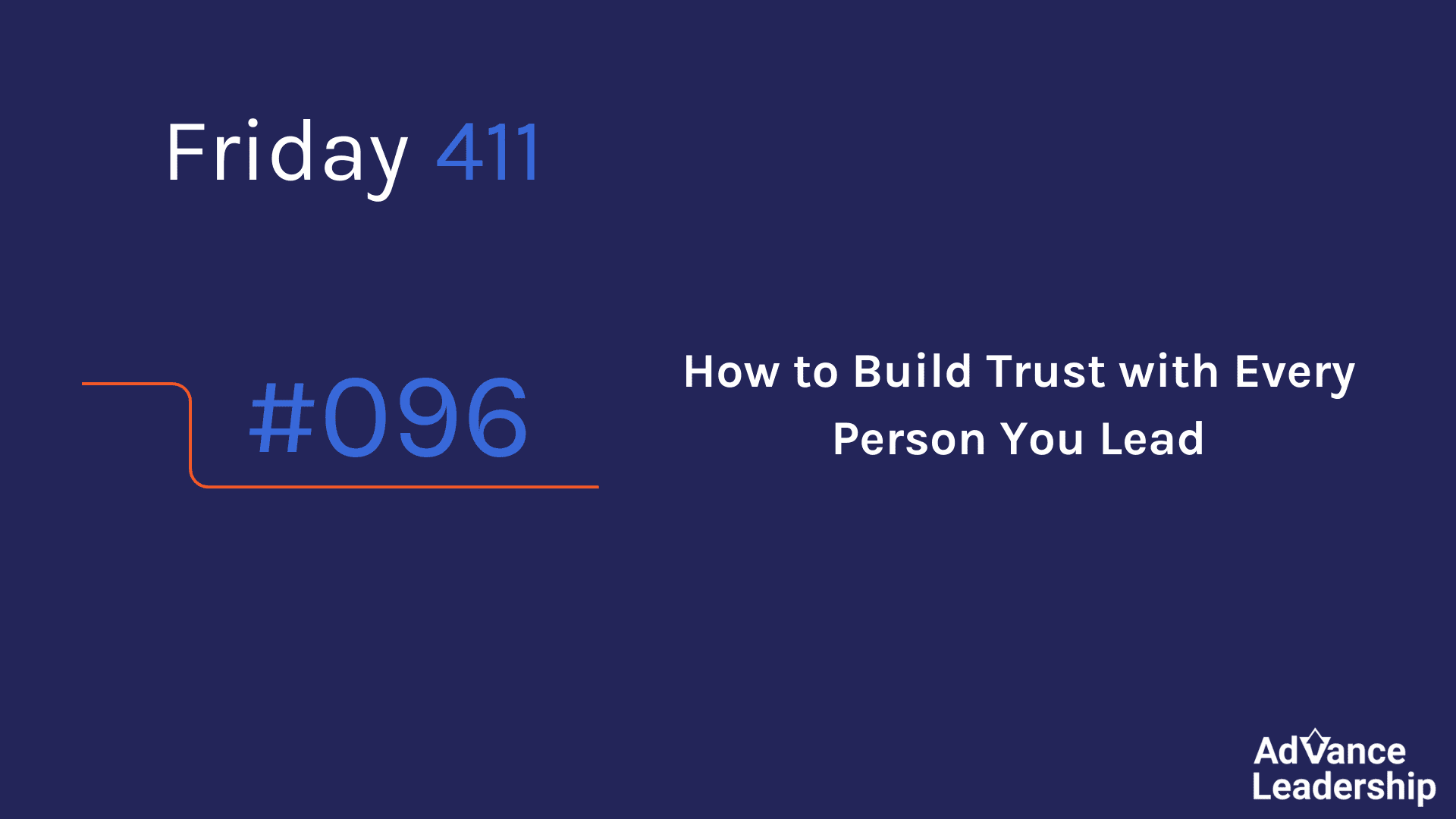Welcome to Friday 411, issue #096. In 4 minutes, with 1 insight and 1 action, you’ll begin proactively building trust with your team.
1 Insight
Trust isn’t earned—it’s given. Leaders who proactively build trust create high-performing teams and contribute to a thriving organizational culture.
A 2023 Edelman Trust Barometer report shows that just 44% of employees trust their leaders. In other words, 56% of employees don’t trust their leaders. This trust deficit creates a significant barrier to organizational success, affecting everything from employee engagement, retention, productivity, and customer satisfaction.
During our Unleashed Leadership workshops, we ask: “On a scale of 1-10, how important is trust to building a high performing team? (1 is not important; 10 is extremely important.” The average score we hear is 9.7. Almost every leader we’ve ever worked with will tell us that trust is absolutely critical. (This mirrors PwC’s 2024 Trust Survey, in which 93% of executives agreed that building and maintaining trust improves the bottom line.)
We usually follow up our first question with another one: “How many of you have a plan for developing trust with your team?” Typically, less than 10% of our participants have a plan.
Leaders agree that trust is critical to success but don’t have a plan for building it. Are you in the same situation?
Trust isn’t something that magically happens. You must take the reins in creating it with your team. Here are three Key Strategies for building trust.
Key Strategy #1: Give Trust First
Traditional wisdom suggests that trust must be earned. However, research from Harvard Business Review shows that teams with leaders who extend trust demonstrate 50% higher productivity than those in organizations where trust is withheld. Read the full article here.
Think about it like this: Would you shop at a store that required you to show your credit score before entering? Of course not. Even if you have a 780 credit score, you feel distrusted. Yet many leaders expect people to prove themselves first. This expectation has a negative effect: it exacerbates distrust among those you lead.
Key Strategy #2: Develop Multi-Dimensional Trust
Smart leaders recognize that trust isn’t one-dimensional. You might trust someone to prepare internal reports but not to deliver quarterly earnings calls with shareholders. We’ve found that leaders must develop three types of trust with everyone they work with:
1. Relational Trust: Built through genuine interest in team members as people, not just resources. Relationship Trust is fostered by talking about the person’s life, interests, and opinions.
2. Integrity Trust: Developed through demonstration of ethical choices. Integrity Trust happens when you see the person doing what is right even when it is difficult.
3. Skill Trust: Established by recognizing someone’s competencies. Skill Trust grows as you see the person become both effective and efficient at their job.
Key Strategy #3: Build Trust Proactively
Waiting for trust to develop naturally is like expecting a garden to thrive without tending it. Successful leaders take intentional steps to cultivate trust:
- Schedule regular one-on-one meetings focused on both results and relationships.
- Bring the team together to discuss critical issues and decisions
- Help team members connect with each other.
Why Build Trust
According to research by Paul J. Zak published in Harvard Business Review, organizations with high-trust cultures report 74% less stress, 106% more energy at work, and 50% higher productivity compared to low-trust organizations. (Source: “The Neuroscience of Trust,” HBR, January 2017)
1 Action
Schedule three 15-minute conversations this week with team members, focusing separately on building Relational, Integrity, and Skill trust.

